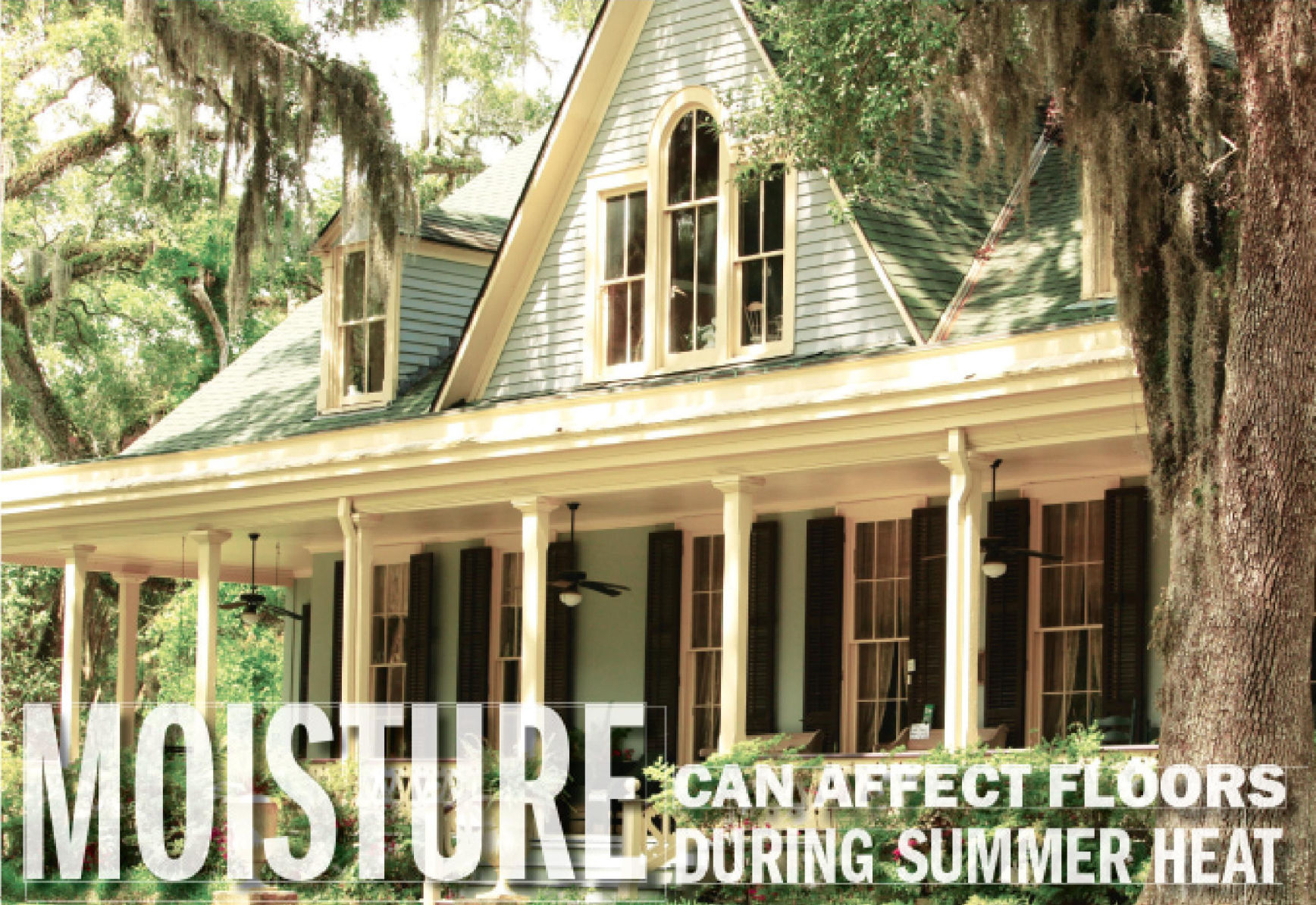
Donald Gaspard
August 11, 2018
4 Surprising Insights Into Life With Parkinson’s Disease
August 13, 2018Just as heat can cause people to sweat it can also cause moisture issues in buildings.
Claudette Reichel, LSU AgCenter housing specialist and director of LaHouse Houma and Landscape Resource, said many raised-floor homes are having problems right now with cupped wood flooring and subfloor moisture problems.
“People are finding lots of conflicting information about what to do,” Reichel said. “There is not a one-size-fits-all remedy, but understanding the combination of factors that cause the problem reveals the most cost-effective solutions.”
Raised floors get wet in summer because of the combination of cool air conditioning and impermeable floor finishes in a humid climate. “No A/C, no problem, but that’s not how we live today.” she said.
Reichel said it is important to understand how moisture moves from warmer to cooler and from wetter to dryer areas Air-conditioning a home in hot humid weather creates a strong water vapor drive from outside to in Rifle Very cool air conditioning can also cool the subfloor to below the outdoor dew point, which causes moisture to condense on the subfloor. That wetness amplifies the problem.
The colder the air conditioning, the worse the problem, she said. Hot humid air outdoors picks up added moisture from soil, which then condenses on the cool sub flooring and tries to move inward. Typical insulation methods such as fiberglass bates make it worse because the subfloor stays cooler.
Cupping occurs and the sub-floor moisture problem worsens when there is impermeable flooring, such as vinyl, laminate or a typical polyurethane finish on wood, Reichel said. When the floor finish is impermeable, moisture can’t get through it, so the subfloor just gets wetter and wetter all summer.
“The wet subfloor wets the bottom of wood flooring, which causes the bottom of the planks to swell, causing cupping in summer,” ghp said.
Reichel offered these suggestions:
— If you keep the house warmer in summer with an air conditioner setting above the outride dew point (76 degrees or higher, preferably 78 degrees), you would likely he OK with just a ground cover of plastic sheeting under the house, good drainage around the house and normal crawl space vents.
— If you don’t keep it too much cooler, you might be OK if all floorings have some moisture permeability, such as carpet, ceramic tile with unsealed grout, hardwood (not engineered wood) with a permeable finish such as high-perm water-based polyurethane, and good drainage.
With a ground cover, it’s important that rainwater not flow under the house and pool on top of the plastic sheeting. Reichel said. The ground cover can be 6-millimeter plastic sheeting secured with stakes or gravel on top. It does not need to be taped or sealed. Reichel does not recommend running a fan under the house.
“Bringing more humid air to cold subfloor material a can actually worsen the problem in humid weather, which is pretty much all summer in Louisiana,” she said.
The subfloor systems that best avoid moisture problems in our climate and allow you to have any type of flooring and set your air conditioner as cold as you like are:
— Fire-rated, foil-faced rigid foam boards (Polyiso board, 2 inches thick for R-13 insulating value) attached across the floor joists, with seams taped and all edges and penetrations sealed for an airtight system.
— Closed-call spray foam insulation 2 to 8 inches thick sprayed on the subflooring between joists and if the crawl space is not completely open, a light spray foam coating on the joists.
Both subfloor treatments provide an airtight, insulating vapor barrier system that prevents moisture problems in summer and winter, Reichel said.
She also Suggests checking to make sure any peat control contract terms do not exclude subfloor foam insulation systems as long as the foundation walls or piers can be viewed for signs of termite activity.
She cautions homeowners to never insulate while the subfloor and flooring are wet
One option, said, is to time the insulation installation at the end of winter, after heating the home in cold weather, which causes the floors to dry outward.
“Otherwise, you can temporarily seal your crawlspace with plastic sheeting — on the ground and around the perimeter — and run a commercial dehumidifler in the crawlspace until the subfloor and wood flooring moisture content stabilizes/1 she said. The preferred moisture content is 12 percent moisture or less, measured with a quality wood moisture meter. Once all is dry, insulation can be done with one of the recommended systems.
“Cupped wood flooring should not be sanded down flat until it is completely dry. Reichel said.
“Cupped planks will flatten as they dry unless they have splits, so wait for them to stabilize,” she said. The time to refinish wood flooring is after ifs flattened as much as it will If you sand off the cupped edges before it flattens, you could end up with a “scalloped’ floor in winter after it dries.”
The LSU A gCenter has a publication available online and print copies at La House Resource Centex that describes the results of a south Louisiana study of the moisture performance of various insulation systems in raised floors.
The LaHouse Resource Center on the LSU campus and the website have more information on this and other housing topics. The demonstration house, with cut-aways, displays, feature signage, free publications and exhibit room, is open for self-guided touring Monday through Friday from 10 a.m. to 1:30 pm as a public service of the LSU AgCenter.
E ARE FINDING LOTS CONFLICTING INFORMATION ABOUT REICHEL SAID. “THERE IS NOT A BUT UNDERSTANDING THE COMBINATION OF FACTO THAT CAUSE THE PROBLEM REVEALS THE MOST COST-EFFECTIVE SOLUTIONS.”









